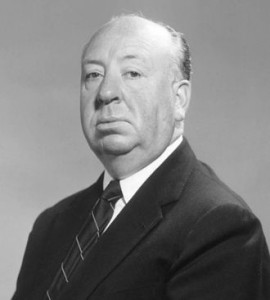Alfred Hitchcock and the Making of Psycho (Rebello, 1990)
 If I had to review Stephen Rebello’s Alfred Hitchcock and the Making of Psycho in one word, it would be “enjoyable.”Perhaps it is anathema for me to say, being an academic, but there is something refreshing about reading a film book that eschews theory, that is interested in documenting the production history of a beloved film rather than deconstructing it and is more interested in telling us what the people who made the film said than it is in explaining what they (must have) meant.
If I had to review Stephen Rebello’s Alfred Hitchcock and the Making of Psycho in one word, it would be “enjoyable.”Perhaps it is anathema for me to say, being an academic, but there is something refreshing about reading a film book that eschews theory, that is interested in documenting the production history of a beloved film rather than deconstructing it and is more interested in telling us what the people who made the film said than it is in explaining what they (must have) meant.
Well researched both archivally (with a five page bibliography) and through interviews (over twenty participants in the film process are thanked in the acknowledgments including Saul Bass and screenplay writer Joseph Stefano), the book’s strength, though, comes from the way Rebello is able to make the process lively and interesting.
Such books, to the extent they give insight into the process, approximate in some ways that of watching the film with the director (or others) at your elbow, able to provide a commentary about the rationale behind scenes. One of my favorite anecdotes comes courtesy of script supervisor Marshal Schlom and discusses Marion Crane (Janet Leigh) packing her bags after she has stolen the money but before she has left town:
“When George and I were cutting the scene,” recalled Schlom, “the theme was a matter of ‘Should she return the money?’ or ‘Shouldn’t she?’ We cut, alternating shots of her dressing to leave with shots of the money. [Hitchcock] told us, ‘Put in more cuts.’ I asked, ‘Aren’t you hitting the audience over the head?’ But it was his kind of movie. He said, ‘I always want the audience to think what she’s thinking. The minute I lose one person, I’ve lost the entire audience.” (134)
The aspect of this quote that I find fascinating is that I generally hate movies that beat me over the head or lead me by the nose. Yet when I rewatched Psycho, this scene really worked. The additional cuts didn’t just serve to convey that Marion was thinking about returning the money, they also served to reinforce a theme of trapped-ness, of a temptation that she can’t break free from. The information provided by Rebello brought into focus something I was feeling but hadn’t necessarily articulated–that part of genius is knowing when and how to break the rules. That it’s not so much a matter of being obvious or being subtle but knowing when to be either.

In another interesting passage, Tony Perkins relates Hitchcock’s uncertainties about the film. Perkins relates that Hitchcock told him: “I’ve always been able to predict the audience’s reaction. Here I haven’t been able to” (163). Aside from just being an interesting bit of trivia, this anecdote leads the reader to reflect on whether or not there is a connection between that uncertainty and the resultant product. Hitchcock was known as the meticulous planner, the master manipulator. And, of course, Perkins’s anecdote creates a counterpoint to the story of the cuts. How can one ensure one has not lost a single audience member if one has no idea how the audience will react? The genius, then, is not just mechanical–the great artist must have an intuitive sense that guides his judgment at times.
The book is filled with such anecdotes, both informative and thought provoking. If there is one nit to pick, it is that Rebello may occasionally repeat a bit of information, suggesting that while the book is arranged chronologically, he wasn’t always sure where to put in a few points. That’s really a very minor issue though. The ultimate compliment to the book is that it makes you want to revisit the film, and it makes the experience of revisiting the film a more enjoyable one.
